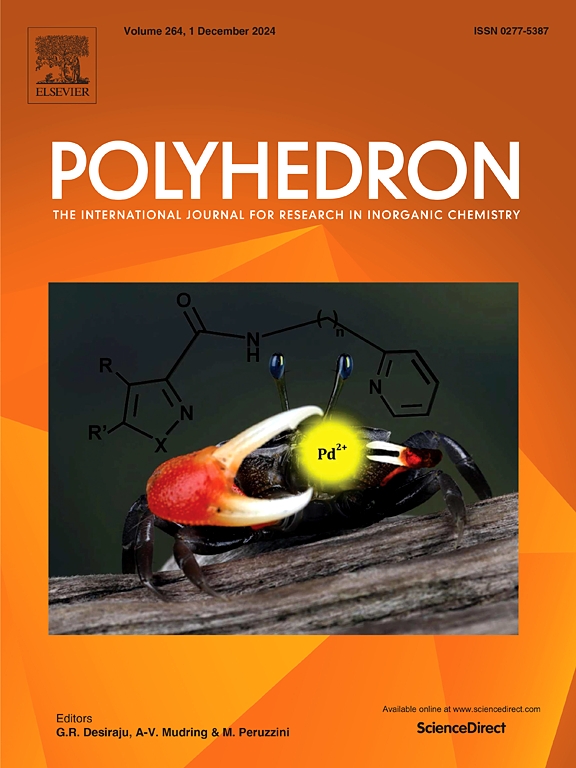Cytotoxicity of copper(II) complexes based on pyridyl- and quinolyl-containing dialkylphosphine oxides
IF 2.4
3区 化学
Q2 CHEMISTRY, INORGANIC & NUCLEAR
引用次数: 0
Abstract
Mononuclear copper(II) complexes were synthesized using diethyl- and diisopropyl(pyridine-2-ylmethyl)phosphine oxides, as well as diethyl- and diisopropyl(quinoline-2-ylmethyl)phosphine oxides, functioning as N,O-bidentate chelating ligands when coordinated with CuCl2 and Cu(BF4)2·xH2O. The resulting compounds were characterized using mass spectrometry, IR spectroscopy, elemental analysis, single crystal and powder X-ray diffraction techniques. The cytotoxic properties of the synthesized complexes were evaluated, revealing that the copper(II) complex derived from quinoline-containing phosphine oxide demonstrated significant cytotoxicity against M-HeLa and HuTu80 cancer cell lines, along with high selectivity indices. The cytotoxic activity of Ni(II), Mn(II) and Cu(II) complexes based on the pyridyl- and quinolyl-bearing dialkylphosphine oxides has been summarized.

含吡啶基和喹啉基二烷基膦氧化物铜(II)配合物的细胞毒性
以二乙基和二异丙基(吡啶-2-基甲基)膦氧化物以及二乙基和二异丙基(喹啉-2-基甲基)膦氧化物为配合体合成了单核铜(II)配合物,与CuCl2和Cu(BF4)2·xH2O配位时作为N, o -双齿螯合配体。用质谱、红外光谱、元素分析、单晶和粉末x射线衍射技术对所得化合物进行了表征。对合成的配合物的细胞毒性进行了评价,发现含喹啉的氧化膦衍生的铜(II)配合物对M-HeLa和HuTu80癌细胞具有显著的细胞毒性,并且具有高选择性指标。综述了以吡啶基和喹啉基二烷基膦氧化物为基础的Ni(II)、Mn(II)和Cu(II)配合物的细胞毒活性。
本文章由计算机程序翻译,如有差异,请以英文原文为准。
求助全文
约1分钟内获得全文
求助全文
来源期刊

Polyhedron
化学-晶体学
CiteScore
4.90
自引率
7.70%
发文量
515
审稿时长
2 months
期刊介绍:
Polyhedron publishes original, fundamental, experimental and theoretical work of the highest quality in all the major areas of inorganic chemistry. This includes synthetic chemistry, coordination chemistry, organometallic chemistry, bioinorganic chemistry, and solid-state and materials chemistry.
Papers should be significant pieces of work, and all new compounds must be appropriately characterized. The inclusion of single-crystal X-ray structural data is strongly encouraged, but papers reporting only the X-ray structure determination of a single compound will usually not be considered. Papers on solid-state or materials chemistry will be expected to have a significant molecular chemistry component (such as the synthesis and characterization of the molecular precursors and/or a systematic study of the use of different precursors or reaction conditions) or demonstrate a cutting-edge application (for example inorganic materials for energy applications). Papers dealing only with stability constants are not considered.
 求助内容:
求助内容: 应助结果提醒方式:
应助结果提醒方式:


